When talking about livebearer fish care and breeding, the journey always begins with an exploration of their unique reproductive strategy.
Unlike species that release their eggs and sperm into the water, both live bearing tropical fish and live bearing freshwater fish have a more involved approach. Female freshwater livebearers carry their eggs internally and later give birth to fully formed offspring.
This unique method of reproduction adds an intriguing aspect to both the care and breeding of these cute live bearing fish for aquariums.
Thus, let’s delve in to learn more about them!
Livebearer Fish: The Aquatic Marvels
Live bearing freshwater fish, also known as viviparous fish, are a fascinating collective of aquatic organisms that possess the unique ability to deliver fully formed offspring instead of laying eggs.
Nevertheless, certain species such as the Texas blind cavefish have evolved this unique reproductive strategy as an adaptation to environments where egg-laying is not feasible. This remarkable trait enables livebearer fish to thrive in conditions that might be unsuitable for them as they rely on egg-spawning mechanisms.
Disclosure: This article contains affiliate links. When you follow a link to purchase the products, I sometime earn a commission, at no additional cost to you. Read my full disclosure here.
Origin
Livebearer fish species are usually distributed in the Southern United States and Central America, including Mexico. These livebearer fish can be observed residing in their natural habitats, typically consisting of sluggish freshwater environments such as streams and small bodies of water. It is worth noting that certain live bearing freshwater fish, like guppies, for instance, have successfully colonized various parts of the globe beyond their initial native territories.
Habitat
Live bearing fish for aquariums prefer to live in water that is slightly alkaline and moderately hard, with a pH level just above 7. They can adapt well to different temperature ranges, ranging from the upper 60s to low 80s degrees Fahrenheit (20-28°C). To ensure well-being of freshwater livebearers, it is suggested to add one tablespoon of aquarium salt for every five gallons of water. These live bearing freshwater fish are generally peaceful but should be housed with other non-aggressive species that share similar water conditions for optimal coexistence.
Adult Size and Lifespan
The adult size and lifespan of live bearing fish for aquariums can vary. Some species have a maximum length of three inches, while others can reach up to five or six inches. It is worth noting that female livebearer fish, like female guppies, are typically slightly larger than males, measuring around an inch in length with a rounder shape when viewed from above. On average, these freshwater livebearers have a lifespan ranging from 3 to 7 years.
Availability
Aquarium enthusiasts frequently purchase live bearing freshwater fish, which are widely available in most pet stores. The cost of each of these live bearing fish for aquariums typically varies from $2 to $6, depending on their distinct hues and markings. It is recommended to buy a group of freshwater livebearers that includes at least one male as well as two females, which might result in a typical total expense of $6 to $18.
Dietary Requirements of Livebearer Fish
Livebearer fish possess a wide-ranging diet that encompasses both plant-based and meat-based foods. To promote their overall health, it is advisable to incorporate staple items such as Aqueon Tropical Flakes, Color Tropical Flakes, Spirulina Flakes, and Aqueon Betta Treat into their daily meals.
Occasionally supplementing with frozen or live foods can add variety and enhance nutrition in live bearing freshwater fish diet. It is crucial to rotate the food options daily while ensuring that they are given an amount they can consume within 2 minutes once or twice per day.
Water Requirements of Freshwater Livebearers
Although live bearing fish for aquariums are typically found in difficult, alkaline water, modern farm-raised varieties can thrive in a variety of water environments. If your other aquarium inhabitants can tolerate salt, they might benefit from a small amount of salt, such as 1 teaspoon of sea salt or non-iodized salt for aquariums per gallon. A pH range of 7.0 to 8.4 and temperatures between 74°F and 78°F are ideal for freshwater livebearers.
Behavior and Compatibility of Live Bearer Fish
Livebearer fish are generally known for their calm demeanor, making them a great addition to community aquariums.
To ensure harmony among the fish, it is recommended to maintain a ratio of 2-3 females per male to minimize potential competition between males. These fascinating live bearing freshwater fish typically have a lifespan ranging from 5 to 7 years and coexist harmoniously with other species such as tetras, rasboras, danios, peaceful barbs, and rainbowfish.
When housing live bearing fish for aquariums in an aquarium setting, it is advisable to consult with an expert before introducing new fish into the tank. Livebearers are active swimmers that tend to occupy the middle portion of the tank.
These freshwater livebearers thrive when kept in groups and enjoy exploring caves and areas adorned with plants. It is crucially important for owners of live bearing freshwater fish to provide a secure lid for their tanks as these aquatic creatures have been known – on occasion -to leap out if they feel threatened or stressed.
Most Common Live bearing Species
- Marigold Wag Swordtail: The Marigold Wag Swordtail is a live bearing fish for aquariums renowned for its vibrant orange hue and docile temperament. With a maximum length of 4 inches, it thrives in community tanks alongside other fish species. Its diet typically comprises commercial foods, algae, and live prey options.
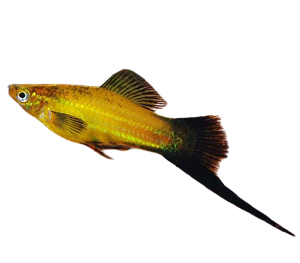
- Red Platy: The Red Platy is a small species, reaching around 2 inches in size, and has a vibrant red coloration. These live bearing freshwater fish are known for their peaceful nature and can coexist harmoniously with other livebearers. Originating from Singapore, these fish display various colors and fin styles.
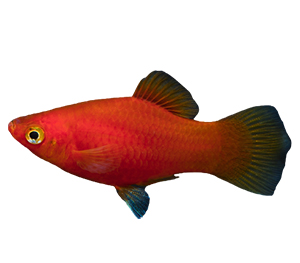
- Black Sailfin Molly: With its distinct dorsal fin, the Black Sailfin Molly is capable of growing up to 6 ½ inches in length. This live bearing fish for aquariums thrives in hard water conditions supplemented with approximately 1 teaspoon of aquarium salt per gallon of water – thus requiring a roomy 30-gallon tank for optimal care.
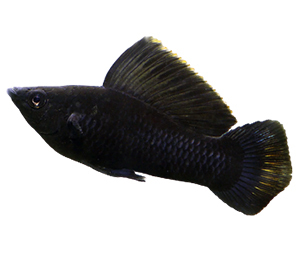
- Red Fire Guppy: The Red Fire Guppy is a visually stunning fish with vibrant red caudal fins that can grow up to 2 inches in length. This livebearer fish exhibits tolerance towards changes in water parameters and is known for its peaceful nature, making it an excellent addition to community tanks. With an omnivorous diet, these live bearing freshwater fish are versatile eaters.
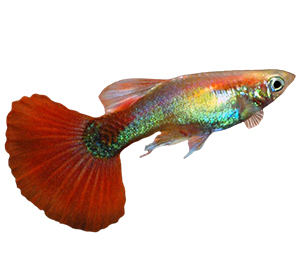
- Marble Lyretail: The Marble Lyretail Molly, another amazing freshwater livebearers stands out with its captivating black-and-white marble patterns and distinctive caudal fins. Growing up to 5 inches long, this molly species prefers lower salt levels and thrives in a spacious 30-gallon tank environment while maintaining their calm demeanor.
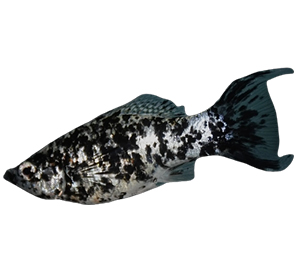
Breeding Livebearer Fish
Preparing Livebearer fish for Breeding
To increase the likelihood of successful breeding, it is important to make certain preparations when it comes to livebearer fish.
- Healthy Diet: This includes incorporating live, frozen, and freeze-dried foods into feeding routine of freshwater livebearers multiple times a day.

- Adequate Nutrition: It is important to provide a nutritious diet as it plays a vital role in promoting successful breeding and the birth of healthy offspring.

- Individual Conditioning: Ideally, male and female live bearing freshwater fish should be conditioned separately in their own tanks. This helps optimize their reproductive fitness.
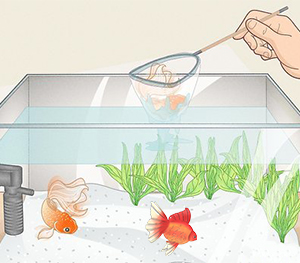
- Optimal Timing: When both male and female fish display good health and vibrant coloration, it may indicate that they are ready for mating.
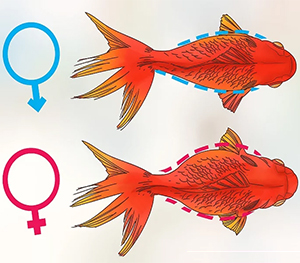
- Forming Pair: Once prepared, introduce the conditioned male and female fish into the same breeding tank. If they have been adequately conditioned, they will probably mate promptly.

- Temperature Adjustment: Adjusting the temperature in the breeding tank slightly higher can stimulate the spawning of live bearing fish for aquariums.

- Male to Female Ratio: To reduce aggression between males of the identical species of live bearing freshwater fish, maintain a ratio of one male to two or three females in the breeding tank.

- Monitor Pregnancy: It is important to closely observe the females for indications of gestation, such as the emergence of a dark “gravid” spot on their abdomens. When this spot reaches a deep hue, nearing blackness, it suggests that the fish will imminently deliver their young.
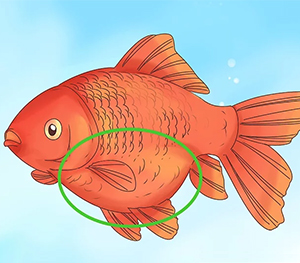
Raising the Fry
Step 1: Separate Adults
Once the adult fish have left the breeding tank after your freshwater livebearer fish have been produced, do so right away. Many species of livebearers have a propensity to consume their own young.
Step 2: Fry’s Food
When livebearer fry begins to swim freely, they are bigger than those of egg-laying species, but they are still too small for typical flake foods. Give live bearing freshwater fish, a food that is suitable for microscopic beings of their size. Provide infusoria right away into the tank with the fry using a dropper.
Step 3: Tank Maintenance
It is crucial to ensure a clean tank environment as the fry continues to grow. Around two weeks after hatching, it is recommended to carry out regular weekly water changes by replacing approximately 25% of the tank’s volume. To effectively eliminate organic waste and dirty water settled at the bottom of the tank, utilize airline tubing for siphoning. Handle this process with caution to avoid causing harm or stress to the fry.
Step 4: Introduce Larger Food
As the fry matures, it is advisable to slowly incorporate larger food options that are appropriate for their size and development stage. Recommended choices may include daphnia, freshly hatched brine shrimp, and finely crushed flake foods.
Conclusion
Breeding live bearing freshwater fish in our aquariums is a super interesting yet slightly tricky task. It is truly remarkable to nurture our beloved aquatic companions and witness the miracle of new life being brought into existence.
While some fish species lay eggs that are susceptible to predation due to their lack of protective measures, live bearing fish for aquariums exhibit a more streamlined reproductive process. The offspring produced by these species possess the ability to swim away and seek refuge from potential threats, thereby enhancing their chances of survival.



